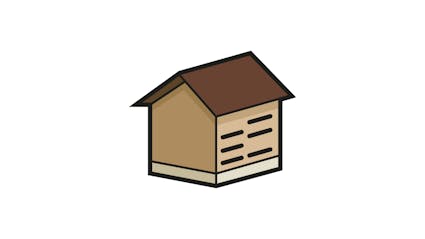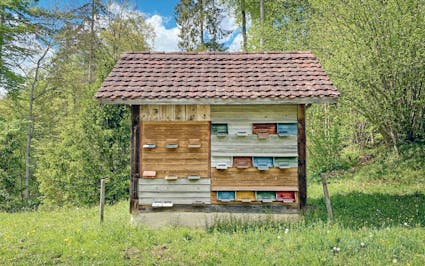614 – Apiary
This bee house or apiary belonged to the Sonnenhof, a farm and craft enterprise in the community of Mettmenstetten.

21 Little Homes
Wooden posts rest on a stone foundation and form a framework with cross beams upon which boards were nailed. A tile roof covers the hut. A door on the rear admits the beekeeper into a small but protected workspace. As simple as the architecture may be, aesthetics were not forgotten: the barge boards on the gable front have fretwork, the boards in the upper row are rounded, the lathing is toothed and the holes for 21 swarms of bees are marked with bright colours – details which make this cabin of two and one half by three and one half metres (eight feet by eleven) look attractive.
This bee house or apiary belonged to the Sonnenhof, a farm and craft enterprise in the community of Mettmenstetten. It was built in 1894–1895 by the master carpenter Johannes Hägi for the knifesmith and farmer August Huber (1845–1930). Huber’s sons used the bee house until 1963 – it was dismantled in 1991.

New Developments
The oldest known receptacles for the smallest livestock were pieces of hollow tree trunk. Hives woven from straw or reeds are also traditional mobile housing for honeybees. In the second half of the 19th century some beekeepers built standardised wooden boxes which were transportable and could be set up each springtime at favourable locations. Another popular but until then little known housing was the bee house. Around 1900 these were provided with all sorts of chalet style decoration. Many bee houses resembled the gingerbread house of fairy tales…
Ballenberg
Swiss Open-Air Museum
Museumsstrasse 100
CH-3858 Hofstetten bei Brienz
Opening hours
11 April to 27 October 2024
10 am to 5 pm daily